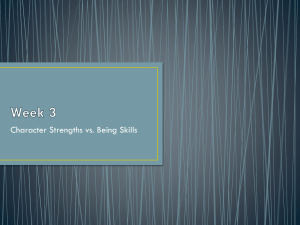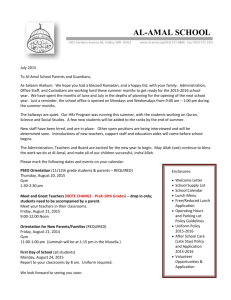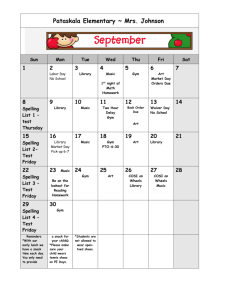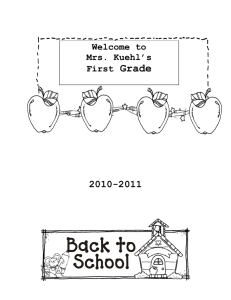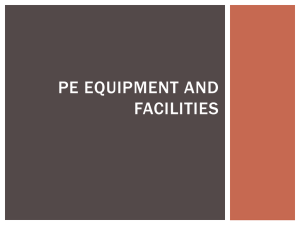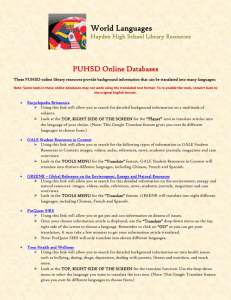Ideas for Working with Level 1 ELLs
advertisement
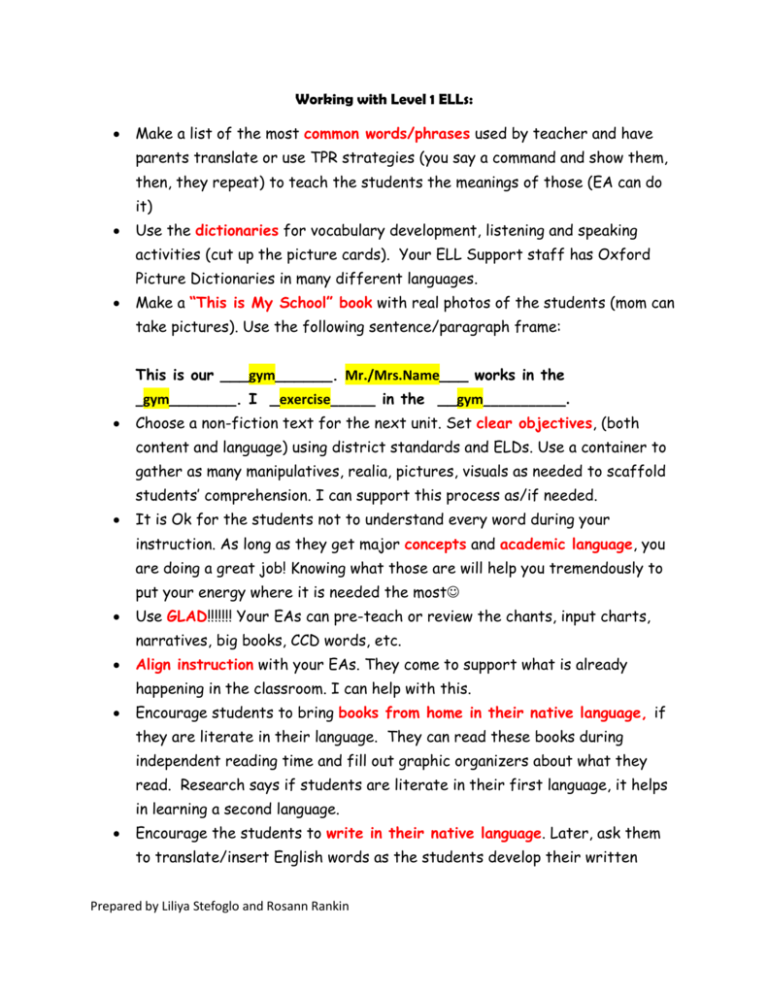
Working with Level 1 ELLs: Make a list of the most common words/phrases used by teacher and have parents translate or use TPR strategies (you say a command and show them, then, they repeat) to teach the students the meanings of those (EA can do it) Use the dictionaries for vocabulary development, listening and speaking activities (cut up the picture cards). Your ELL Support staff has Oxford Picture Dictionaries in many different languages. Make a “This is My School” book with real photos of the students (mom can take pictures). Use the following sentence/paragraph frame: This is our ___gym______. Mr./Mrs.Name___ works in the _gym_______. I _exercise______ in the __gym___________. Choose a non-fiction text for the next unit. Set clear objectives, (both content and language) using district standards and ELDs. Use a container to gather as many manipulatives, realia, pictures, visuals as needed to scaffold students’ comprehension. I can support this process as/if needed. It is Ok for the students not to understand every word during your instruction. As long as they get major concepts and academic language, you are doing a great job! Knowing what those are will help you tremendously to put your energy where it is needed the most Use GLAD!!!!!!! Your EAs can pre-teach or review the chants, input charts, narratives, big books, CCD words, etc. Align instruction with your EAs. They come to support what is already happening in the classroom. I can help with this. Encourage students to bring books from home in their native language, if they are literate in their language. They can read these books during independent reading time and fill out graphic organizers about what they read. Research says if students are literate in their first language, it helps in learning a second language. Encourage the students to write in their native language. Later, ask them to translate/insert English words as the students develop their written Prepared by Liliya Stefoglo and Rosann Rankin vocabulary. Using the dictionaries I provided will help the students write/translate within a theme/topic. Use the ipad app: i translate voice. You and you student can talk into it, and it will translate it to English and multiple other languages. Or your student can read their writing into the app. It will translate their writing into English, so you can read it. Remember it is not a perfect translation. There will be grammatical errors, but you will understand the gist of the message. Use advanced graphic organizers to provide thinking frames. Throughout the day, use Leveled Questions to check for understanding and provide comprehensible output. Show, point (Point to a picture of a gym.) Yes/No (Is this a gym?) Either/Or (Is this a gym or a library?) What, Where, When/What time, How much, How many (What is this? Where do you eat? When do you go to lunch? How many libraries do we have?) Why, How (Why do we need to exercise?) Prepared by Liliya Stefoglo and Rosann Rankin
